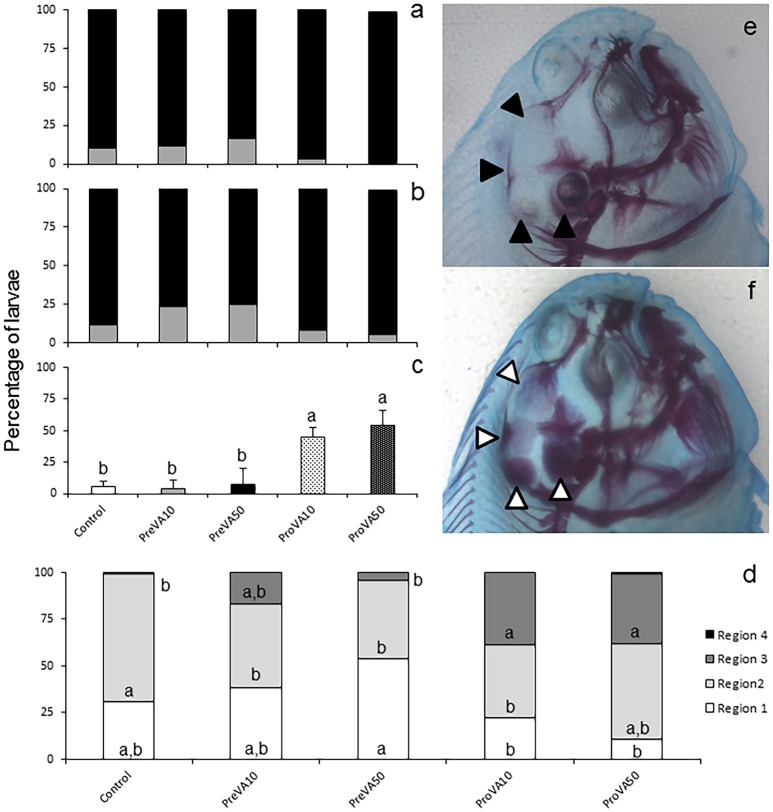Figure 4.
Mineralization degree of different skeletal structures in 21 dph Senegalese sole larvae fed with increased dietary vitamin A levels at different developmental stages. Percentage of larvae showing different degrees of mineralization (showing fully mineralized (black bar fraction), slightly mineralized (gray bar fraction) and not mineralized (white bar fraction) structures) of upper jaw (a) and lower jaw (b). Percentage of larvae showing an onset of mineralization in closely related axial structures (hyoid, interhyal, pre-opercular and quadrate) (c), and in defined cranial regions (R1, R2, R3, and R4; please see further information in Supplementary Figure 2) (d). A detailed view of the degree of mineralization of several cranial structures from Control (e) and ProVA50 (f) larvae at 21 dph is presented. Note the extended alizarin red staining in several cranial regions when comparing Control (black arrow heads) with ProVA50 (white arrow heads) larvae. For a detailed description about the different experimental groups, please see the legend of Figure 1. Different letters within white, light gray, strong gray and black bar fraction in graph (d) or at the top of each bar in graph (c) denotes statistically significant differences among experimental groups (ANOVA, P < 0.05; N = 3).

